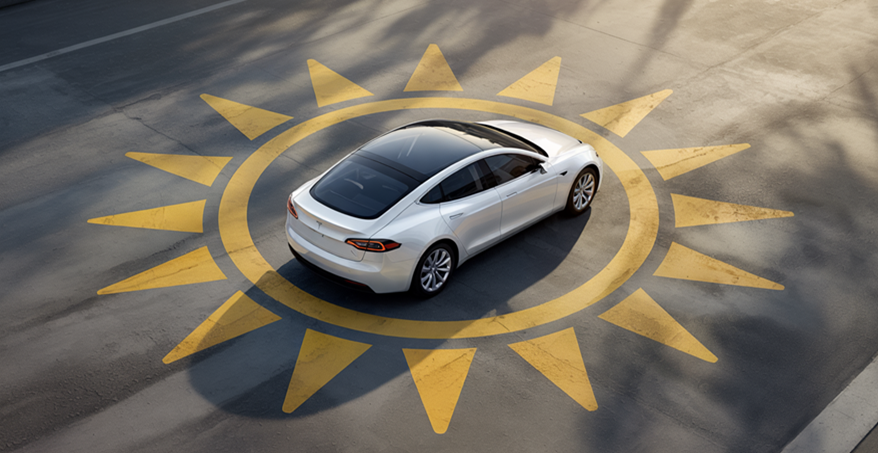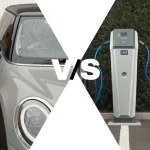Solar cars are no longer science fiction—see how these three models are reshaping the EV conversation in 2025.
The shift toward sustainable mobility has never been more urgent. With carbon emissions and energy costs on the rise, innovators are pushing the boundaries of what electric vehicles (EVs) can do. Enter the solar-powered car—a category once dismissed as niche, now emerging as a serious alternative for eco-conscious drivers. In 2025, three standout names dominate this space: Aptera, Lightyear 0, and the soon-to-be-released Sono Sion.
For drivers asking if solar EVs are viable, the answer depends on daily mileage, climate, charging habits, and expectations.
This article breaks down these groundbreaking vehicles, analyzing performance, cost, and technology—so you can see if solar power truly fuels the future.
The promise of solar mobility in 2025
Unlike traditional EVs, solar EVs integrate photovoltaic panels directly into the vehicle’s body, allowing the car to charge itself using sunlight. Theoretically, this could mean days or even weeks without needing to plug in, especially for drivers with short commutes or those living in sunny regions.
But solar capacity alone doesn’t make a car practical. Efficiency, build quality, affordability, and everyday usability matter just as much. Here’s how each major player stacks up.
Aptera: Ultra-efficiency meets aerospace-inspired design

Starting price: $25,900
Range (with full battery + solar): Up to 1,000 miles (select trims)
Daily solar range (ideal conditions): Up to 40 miles per day
Top speed: 101 mph
0-60 mph: 4.0 seconds (AWD model)
The Aptera takes minimalism to the extreme. Its ultra-lightweight, three-wheeled design minimizes drag, giving it one of the lowest energy consumptions of any vehicle on the road—just 100 Wh/mile. The car’s unique teardrop shape may raise eyebrows, but the engineering behind it is what makes solar charging truly viable here.
With up to 700 watts of integrated solar panels, the Aptera can recharge itself for most drivers’ daily use, without ever plugging in. Its modular battery options (from 250 to 1,000 miles of range) allow users to choose based on lifestyle and budget.
Key advantage: Best solar efficiency and affordability
Ideal for: Eco-conscious commuters, tech enthusiasts, off-grid travelers
Lightyear 0: The luxury solar sedan that turned heads

Starting price: $259,000
Range (with full battery + solar): Up to 621 miles
Daily solar range (ideal conditions): Up to 43 miles per day
Top speed: 100 mph
0-60 mph: 10 seconds
Launched as a premium halo car, the Lightyear 0 blends elegance and solar innovation in a sleek, aerodynamic sedan. Unlike the quirky Aptera, this car resembles a futuristic grand tourer with clean lines and premium materials inside and out. It houses a 60 kWh battery and 5 square meters of solar panels, with solar yield optimized by maximum surface coverage and smart orientation tracking.
Despite the jaw-dropping price tag, Lightyear 0 proved a proof-of-concept for practical solar integration. It’s not mass-market, but it established a framework that Lightyear’s next model—the Lightyear 2, expected in 2026—aims to build on with a target price of $40,000.
Key advantage: Most advanced solar tech and build quality
Ideal for: Early adopters, sustainability investors, clean tech pioneers
Sono Sion: Community-powered EV meets solar practicality

Expected price: $30,000 (U.S. availability TBD)
Range (with full battery + solar): Up to 190 miles
Daily solar range (ideal conditions): Up to 20 miles per day
Top speed: 87 mph
0-60 mph: ~9 seconds
The Sono Sion is the most practical and accessible of the three—for families and urban drivers alike. Covered in solar panels from bumper to bumper, the Sion adds around 70 miles of free driving per week in sunny conditions. While it doesn’t match the range or power of its competitors, it excels in versatility.
Beyond solar integration, Sono Motors designed the Sion with bi-directional charging and a car-sharing app ecosystem, promoting community-based energy use and affordability. Though manufacturing delays pushed the rollout into late 2025, the demand is strong—especially in Europe, where solar adoption and compact EV demand align closely.
Key advantage: Affordability and practical daily solar use
Ideal for: Urban commuters, green families, solar adopters on a budget
Are solar-powered cars viable today?
In 2025, the answer is more promising than ever. Each of these vehicles offers a unique vision of what solar transportation can look like:
-
The Aptera is redefining efficiency with aerospace precision.
-
The Lightyear 0 is proving that solar can be luxurious.
-
The Sono Sion is turning community mobility into reality.
But solar EVs are not a one-size-fits-all solution. For now, they’re best suited for drivers with moderate daily mileage, ample sunlight, and interest in cutting-edge tech. Range anxiety, while shrinking, still requires drivers to plan more carefully than with traditional EVs or hybrids.
Solar cars and the American market
As federal tax credits expand to cover more clean vehicle innovations and solar panel prices continue to fall, the U.S. is poised for wider adoption of solar-integrated mobility. Still, climate variability across regions—from Seattle to Phoenix—means solar performance will vary greatly, limiting mass-market viability in the short term.
However, for the growing base of eco-driven consumers, solar EVs are no longer a fantasy—they are functional, forward-looking alternatives worth serious consideration.
In 2025, solar-powered vehicles aren’t just about innovation—they’re about independence. And for many, that’s the freedom that drives them.


